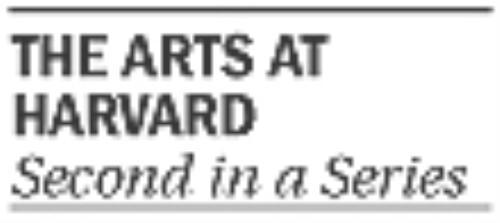
News
Pro-Palestine Encampment Represents First Major Test for Harvard President Alan Garber

News
Israeli PM Benjamin Netanyahu Condemns Antisemitism at U.S. Colleges Amid Encampment at Harvard

News
‘A Joke’: Nikole Hannah-Jones Says Harvard Should Spend More on Legacy of Slavery Initiative

News
Massachusetts ACLU Demands Harvard Reinstate PSC in Letter

News
LIVE UPDATES: Pro-Palestine Protesters Begin Encampment in Harvard Yard
Concentrate on The Arts
Harvard ought to provide greater institutional support for artistic pursuits

Over the weekend in performances for Arts First—the University-sponsored annual arts festival—students will play in violin concertos, act in Shakespeare classics and dance in student-choreographed numbers. But come next week, Harvard will return to its traditional policy of neglect and utter lack of institutional support. As curricular review kicks off its examination of undergraduate education, Harvard must challenge its restrictive notion of “liberal arts” and construct an arts curriculum to meet growing student demand.
Despite obvious deficiencies, student interest and activity in the arts has surged. Thespians explore their passions in upwards of fifty student-produced plays each year, as well as a small selection of limited-enrollment courses offered by the non-degree granting Dramatic Arts Committee. And without a dance concentration, dancers have instead gravitated toward Expressions, Harvard Ballet Company and the many other student-based dance ensembles, as well as dance courses taught through the Office for the Arts (OFA). But Harvard provides few academic options—beyond the complicated procedure of designing a special concentration—for the many students who wish to make the arts central in their curricular as well as extracurricular plans.
The Music and Visual and Environmental Studies (VES) departments are two exceptions, but their troubles also reveal a fundamental lack of institutional support. Constrained by its meager building, the Music Department has little room for instruction in performance techniques, much less room to expand to meet growing demand—Dean of the College Harry R. Lewis ’68 says there are “much greater resources in student talent than in practice rooms [and] professionals.” And although VES routinely hires visiting professors—often-prominent film directors, painters and photographers—the department still lacks adequate faculty and resources to support demand for its popular courses. VES Chair Marjorie Garber says “Harvard and VES needs more in the way of display.” With these limited resources, VES courses routinely limit enrollment to both concentrators and non-concentrators alike.
The arts are as valid and important to the University’s mission as any other academic subject. The practice and performance of the arts provide creative outlets for reflecting, critiquing and interpreting the world. Just as existing concentrations tailor their curricula to the subjects’ history, trends and real-world applications, arts concentrations focus on history, theory and performance. The University should not, nor would it ever, create an arts conservatory within Faculty of Arts and Sciences, but academic endeavors which aim to create art—not just interpret it—deserve far more support.
Most broadly, the University should improve its arts curriculum not only by creating new departments, but also by increasing faculty and space designated for all the arts. True, the University’s development is constrained by money and land—the FAS faces an impending budget crunch and many departments across the campus have been stammering for additional space. But Harvard could take some initial steps to improve the arts without much additional funding or space. Forming a Dramatic Arts concentration on the existing foundation—both the courses and space—of the Committee on Dramatic Arts would set the stage for future growth. The committee currently boasts more than two-dozen affiliated faculty offering 16 undergraduate dramatic arts courses. Harvard also has access to affiliated theaters like the Agassiz, the Loeb Experimental and the Mainstage, which already provide some rehearsal and technical space for student performers. These represent a loose skeleton on which a fully fleshed-out department can be created.
Any curricular vision for the various arts disciplines would be incomplete, however, without an interdisciplinary focus, especially as the future of the arts appears to be headed toward the dissolution of boundaries between traditional forms. The University should support a center for the Arts to gather faculty and students to work together across disciplinary borders. Like the countless other on-campus centers, this Arts center could host study groups, panels and present artistic work, but more substantively, it could make Harvard a leader nationwide in arts education.
In honor of Arts First, University President Lawrence H. Summers has called arts achievements “enormously important [and] as serious and as significant as achievements that we strive for in philosophy or in science or in any other field.” If Summers is serious, he ought to prove it by pushing for a greater arts emphasis in the curriculum.
Want to keep up with breaking news? Subscribe to our email newsletter.
